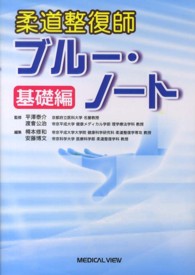- ホーム
- > 洋書
- > 英文書
- > History / World
Full Description
This book examines the history of reforms and major state interventions affecting Russian agriculture: the abolition of serfdom in 1861, the Stolypin reforms, the NEP, the Collectivization, Khrushchev reforms, and finally farm enterprise privatization in the early 1990s. It shows a pattern emerging from a political imperative in imperial, Soviet, and post-Soviet regimes, and it describes how these reforms were justified in the name of the national interest during severe crises - rapid inflation, military defeat, mass strikes, rural unrest, and/or political turmoil. It looks at the consequences of adversity in the economic environment for rural behavior after reform and at long-run trends. It has chapters on property rights, rural organization, and technological change. It provides a new database for measuring agricultural productivity from 1861 to 1913 and updates these estimates to the present. This book is a study of the policies aimed at reorganizing rural production and their effectiveness in transforming institutions.
Contents
Part I. Dilemmas of Agrarian Reform in Russia: 1. Imperial reform, 1861-1913; 2. The NEP and Soviet era reforms, 1921-89; 3. Transition agrarian reform, 1991-2008; Part II. Russian Law and Rural Organization, 1861-2008: 4. Property rights reform; 5. Rural organization and entrepreneurship; Part. III. Russian Agricultural Performance, 1861-2008: 6. Technology and farming culture; 7. The productivity of Russian agriculture; Conclusion; Appendices.






